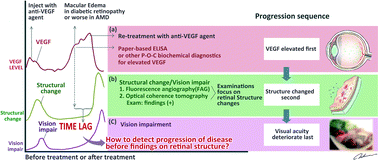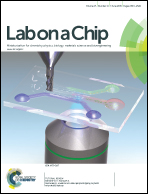Monitoring VEGF levels with low-volume sampling in major vision-threatening diseases: age-related macular degeneration and diabetic retinopathy
Abstract
The purpose of this article is to demonstrate the capacity of paper-based ELISA (P-ELISA) to monitor VEGF in patients requiring treatment for vision-threatening diseases. The most commonly encountered vision-threatening diseases are age-related macular degeneration (AMD) and diabetic retinopathy (DR), both of which may require short-term or life-long anti-VEGF injection treatment therapy. Accurate measurement of VEGF concentration in aqueous humor can provide significant and timely information to diagnose the disease state. Adequate and precise therapy may consequently be provided. At odds with conventional diagnostic approaches is the fact that a maximum of only 200 microliters of aqueous humor can be safely removed from the eye for testing. Fortunately, new diagnostic platforms, such as P-ELISA, require only minute volumes, i.e., approximately 2 microliters per test “well” and approximately 40 microliters total to quantify VEGF levels, and the testing process takes less than an hour. Thus, point-of-care (POC) diagnostics, such as P-ELISA, should be examined and improved upon as needed in order to develop an efficient tool for outpatient clinics and others to obtain semi-quantitative results that might facilitate accurate dosing of anti-VEGF treatment and delay or prevent the progression of AMD and DR.


 Please wait while we load your content...
Please wait while we load your content...